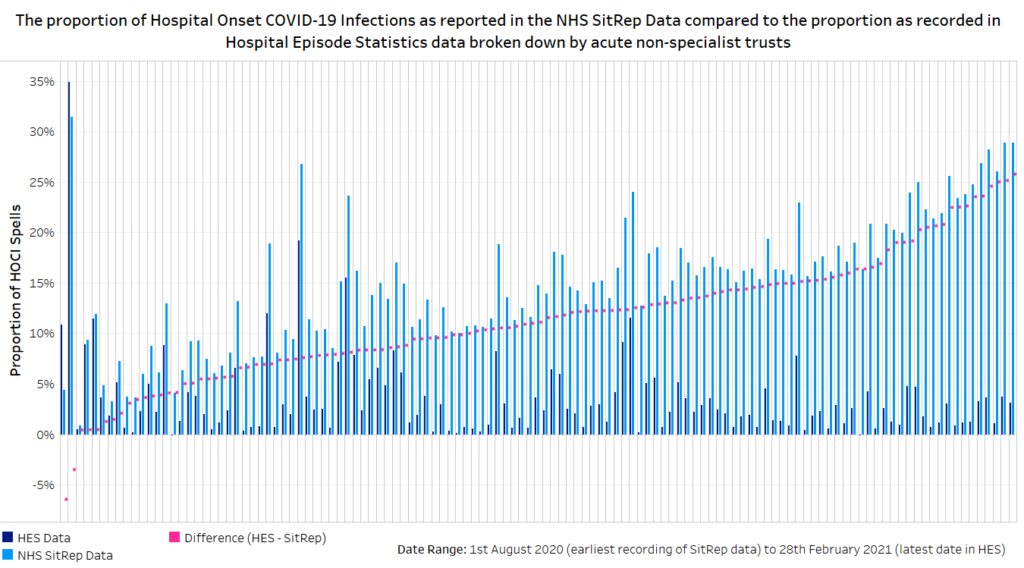
We need to get better at reporting hospital acquired COVID-19 to improve infection prevention measures
07 Sep 2021

07 Sep 2021
A study into the recording of Hospital Onset COVID-19 Infection (HOCI) has found that there is substantial variation in the way the numbers are recorded, with most trusts under-reporting the situation.
Understanding nosocomial infections (infections that are acquired in hospital) is fundamental to ensuring the right infection prevention measures are in place to control the spread of the virus. Researchers from several Universities have found that more than one in ten people were infected with COVID-19 in hospital during the first wave of the pandemic.
Analysts at Telstra Health UK decided to investigate the way these in-hospital infections were recorded to establish if there was variation between providers. They compared the numbers of HOCIs recorded in the daily NHS SitRep numbers to those recorded in Hospital Episode Statistics (HES) – data sets that can be used to detect trends and help to plan for better health care. The results showed discrepancies in the recording of the data between NHS SitRep numbers and HES.
Since April 2020, data has been collected and published publicly as part of the daily COVID-19 SitRep figures. Guidance from NHS England says that the methodology for hospital-acquired COVID-19 is a patient who has developed COVID-19 more than seven days after hospital admission.
Monthly submissions at trust level include patient counts on:
Calculating the difference between the two figures enables the NHS to monitor HOCI cases over time.
However Telstra Health UK analysts found an 11 per cent difference in the national average proportion of HOCI spells, depending on whether SitRep or HES data was used.

The bar chart above illustrates the variability in HOCI spells according to the SitRep data (light blue) but also the significant differences between the proportions reported compared to the proportion of HOCI in HES data (dark blue). The difference between the two percentages is shown in magenta and highlights the disparity between the two data sources.
National average proportion of HOCI spells for all acute non-specialist trusts in England (and range of proportions at trust level).
| NHS – COVID SitReps | 14.5% | (0.9% – 31.4%) |
| HES Data | 3.1% | (0% – 34.9%) |
Analysis of good data is crucial for benchmarking and to better patient care
HES data is crucial to monitoring trends and patterns in NHS hospital activity, helping to reveal health trends over time and support local service planning.
At Telstra Health UK, our expert analysts use publicly available data sets to provide insight into how trusts and health systems are performing, highlighting specific areas that would benefit from change and helping to improve patient care.
With 5.4 million people currently waiting for treatment as a result of the COVID-19 pandemic, it is vital that the NHS has all the information available at its fingertips to be able to plan for the future as well as being able to put in place the right control measures to ensure the virus cannot spread among the most vulnerable people in our hospitals.
But with such clear disparities in the figures, the data sets cannot be considered a reliable source for benchmarking HOCIS. It’s time to acknowledge this lack of nosocomial infection coding in relation to the COVID-19 coding guidance and to improve such recording to allow for a more accurate depiction of COVID-19 in hospital in HES data and enable more meaningful use of the data.
Get the latest insights and updates from Telstra Health UK.
View now